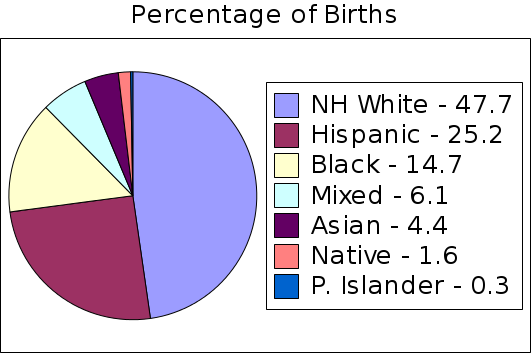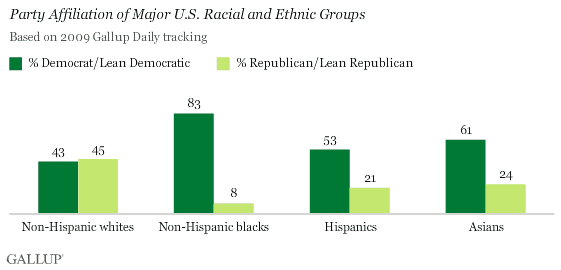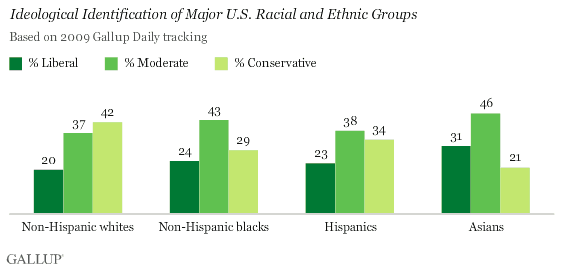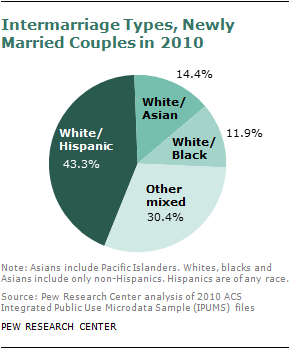The Census released its birth estimates for the 12 months between July 1, 2010 and July 1, 2011. For the first time, the Census reported that Non-Hispanic Whites did not make up the majority of births in the United States.

This trend has been developing for quite some time, making the report less than surprising. Absent something totally unforeseeable, the era of the non-Hispanic White majority is nearing an end. This is a very meaningful development for many reasons, but here I want to focus briefly on electoral politics. Consider the following Gallup charts:


Basically every racial group except non-Hispanic Whites (NHW) heavily favors the Democratic Party. Even NHWs are pretty split. When it gets to professed ideology, the picture becomes a bit less clear. Except for Asians, more people in every racial group identify as conservative than identify as liberal. Moderates make up the largest ideological affiliation for every racial group except NHW. Given how slippery these three ideological categories are, I suspect the party affiliation data is more telling.
If these party affiliations remain at the percentages that they are, the demographic shift away from a NHW majority will destroy the Republican Party as we know it, or at minimum relegate it to permanent minority status. Especially interesting is that much of the Hispanic increase in population is happening on the southern border in states like Texas, New Mexico, and Arizona. If a Democratic majority takes hold in any of those states — but especially Texas — Republicans will have a very difficult time winning the presidency in the future.
Of course, the party affiliations may not hold. Parties might change their platforms or messaging in response to the new demographic profile of the country. Party shifts and any number of other factors might cause the racial breakdown of party affiliations to flip in any number of directions. This is all obvious.
One less obvious possibility is that racial affiliations might change. Throughout the history of the United States, populations originally considered non-White eventually made their way into whiteness, the Irish being the most cited example. Hispanics are especially prime for inclusion into whiteness: most already check the White box on the census for instance. Additionally, intermarriage is on the rise in the United States. In 2010, 15% of marriages were interracial, up from 6.7% in 1980. Here is how they broke down:

Although marriage is not a perfect indicator of future race categories or the racial categorization of future offspring, it provides at least some rough notion of how things might go. White/Hispanic intermarriages are the most common by a huge margin. These high intermarriage rates, along with the self-identification point raised above, points to the possibility that Hispanic Whites and non-Hispanic Whites might just become undifferentiated Whites. In that scenario, White people would retain the majority, and Hispanic would become a differentiation more akin to the way Italian and Irish Whites are differentiated now. Such assimilation might also slowly wipe out political affiliation differences between Hispanics and NHW, preserving the White political majority.
Needless to say, this is highly speculative, but it is certainly not impossible. Whatever happens, something must give — politically or racially — in the coming future. What actually does give is anyone’s guess.